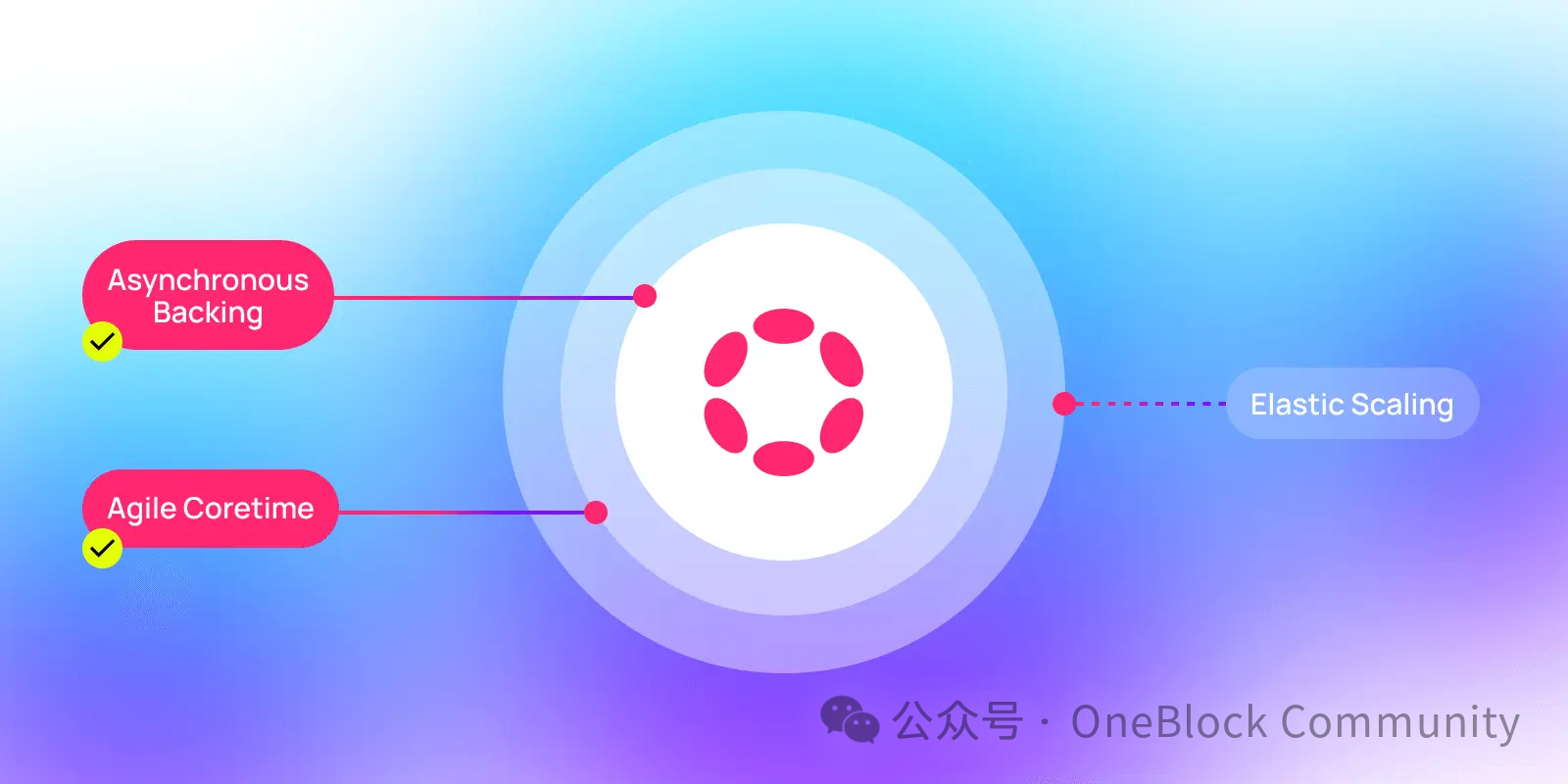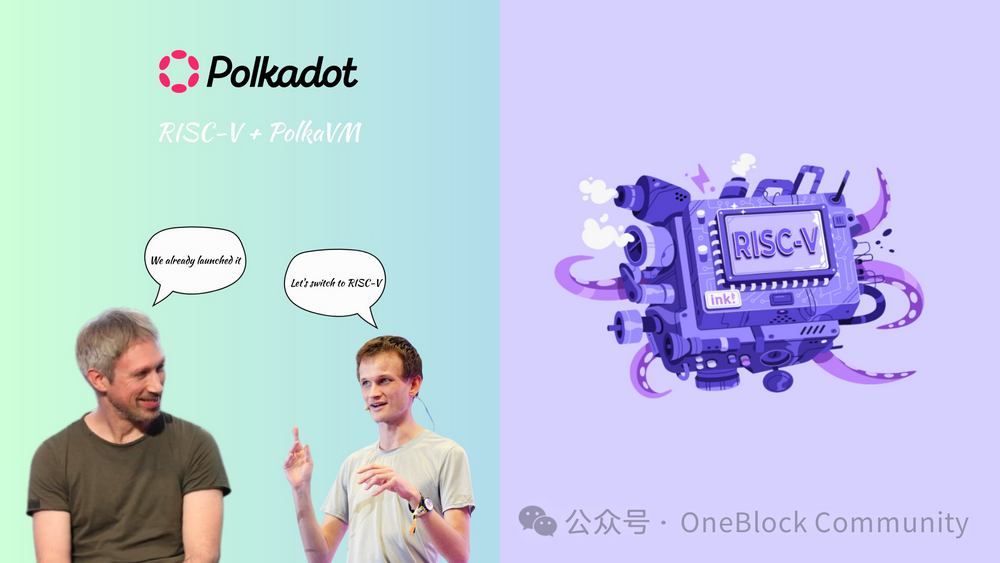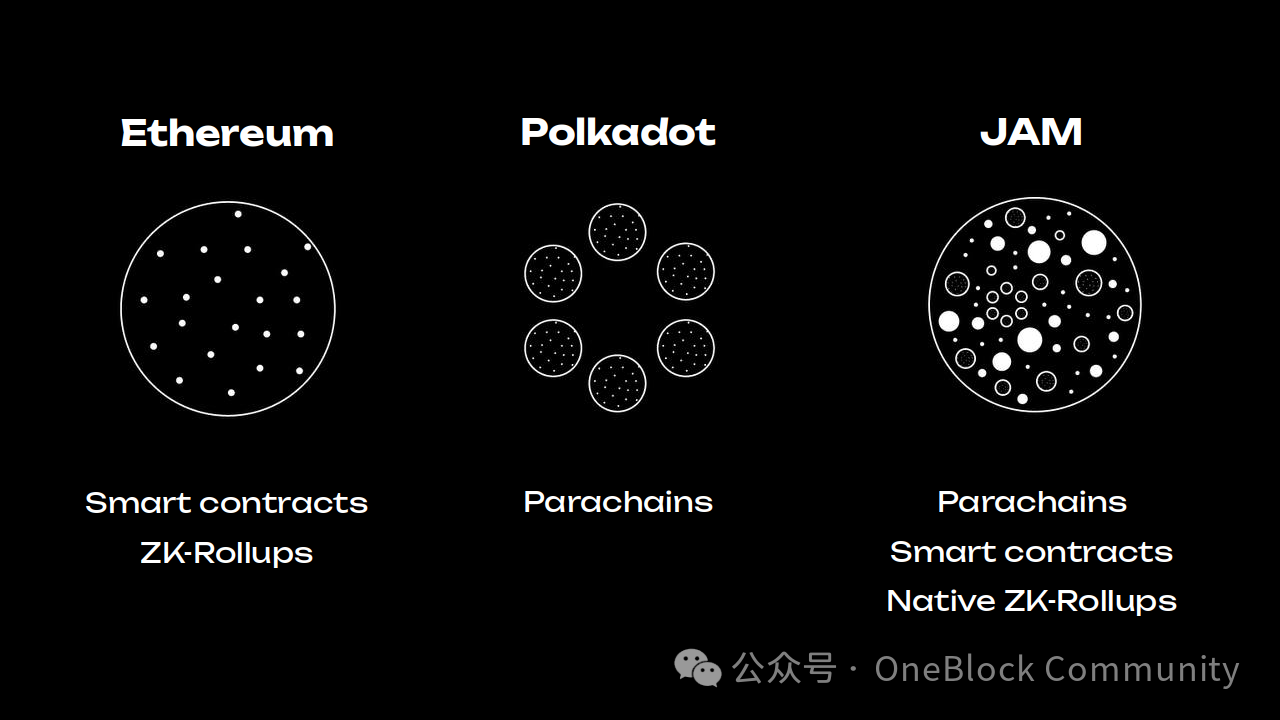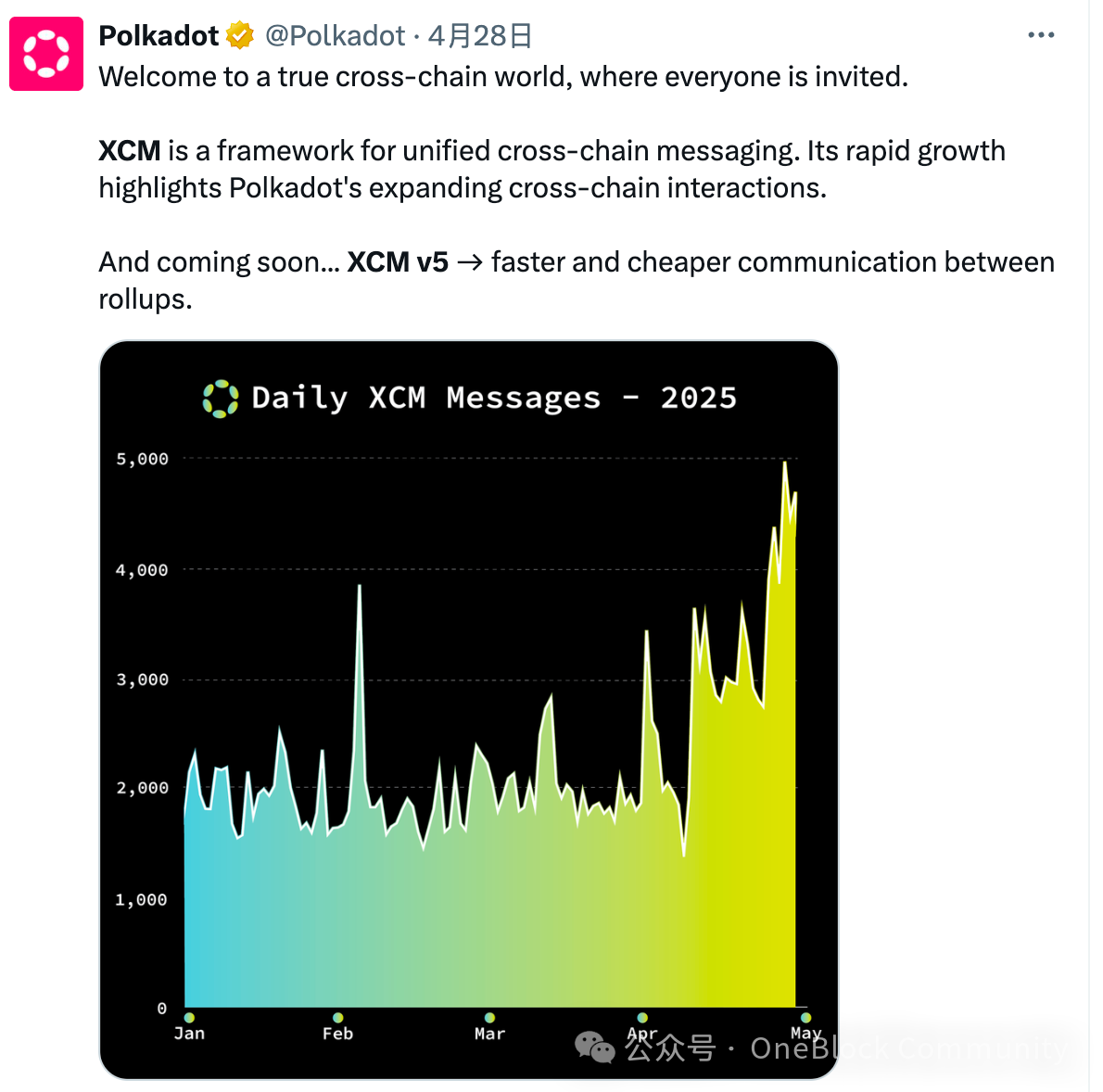One third of 2025 has quietly passed, and the Polkadot ecosystem is also accumulating strength in its continued advancement. After the first quarter of technical consolidation and ecological preparation, in the second quarter, Polkadot is standing at the starting point of a key breakthrough.
From the last piece of the Polkadot 2.0 puzzle - elastic expansion is about to go online, to the upcoming release of XCM v5, Polkadot App, and JAM architecture testnet, to the concentrated landing of multiple Web3 infrastructure projects, the Polkadot ecosystem is accelerating from the "construction period" to the "availability period".
What major breakthroughs will Polkadot have in the second quarter? This article will comprehensively sort out the latest developments in core technology innovation, mainstream market layout and key ecological projects, revealing the new wave of development that the Polkadot ecosystem is about to set off.
0 1Core Technology Progress
Elastic Scaling: The final piece of the puzzle for Polkadot 2.0
In the OpenDev Core Polkadot Call on April 15, the Polkadot core development team confirmed that the highly anticipated Elastic Scaling feature will be launched in the next runtime upgrade and activated through the governance mechanism. Elastic scaling is the last piece of the Polkadot 2.0 puzzle, so if all goes well, Polkadot 2.0 will be fully launched soon, further improving the scalability and flexibility of the network.
Elastic expansion is a dynamic resource allocation mechanism that allows parachains to use multiple cores in the same block according to actual needs, thereby improving overall throughput and alleviating network congestion in high-volume scenarios. In traditional architectures, parachains can usually only use a single core to submit blocks. This limitation can lead to congestion and inefficiency in high-volume scenarios. Elastic expansion combined with Agile Coretime's flexible resource scheduling mechanism allows core resources to be allocated on demand and dynamically expanded, bringing higher performance ceilings and lower resource waste to the project, significantly enhancing the elasticity and practicality of the entire network.

PolkaVM: Leading the New Era of Smart Contracts
PolkaVM is a new generation of virtual machine tailored for the Polkadot smart contract ecosystem. It is based on the open source RISC-V instruction set architecture and adopts a register machine design. Compared with the stack structure of Ethereum EVM, PolkaVM is closer to modern hardware execution methods and has higher execution efficiency and stronger scalability.
Through the revive translator, PolkaVM can compile the Solidity contract intermediate code (YUL) into RISC-V instructions, thereby achieving compatibility with the Ethereum tool chain, such as supporting the Remix editor, MetaMask wallet, etc. This allows developers to enjoy more efficient underlying performance in a familiar development environment, and is expected to promote the rapid expansion of the Polkadot smart contract ecosystem.
Currently, PolkaVM can be run on the Westend testnet of Asset Hub, and is expected to be launched on Kusama in Q2 2025 and on the Polkadot mainnet in Q3.
🔍 Learn more: Ethereum-compatible smart contracts are coming to Kusama! Polkadot ushers in a new era of smart contracts

JAM: A vision for a multi-core decentralized supercomputer
According to the monthly Fellowship technical meeting held by Polkadot in April, several teams have completed the first milestone of JAM development. For example, the JAM DUNA team has advanced to the second phase and is trying to implement a more efficient PVM engine. At the same time, design discussions around the PVM recompiler have also begun, indicating that developers are actively exploring the implementation path of the third and fourth phases. JAM's small test network is expected to be launched in May, laying the foundation for subsequent full deployment.
JAM (Join-Accumulate Machine) is the next-generation architecture solution for the Polkadot relay chain. It aims to combine the cross-chain security of Polkadot with the flexibility of Ethereum smart contracts to build a decentralized computing platform that does not require permission and supports multi-language implementation. The ultimate goal of JAM is to create the world's first multi-core decentralized supercomputing network, consisting of 341 high-performance cores, each of which has a computing power higher than that of ordinary computers, and the overall throughput can theoretically reach one billion transactions per second (TPS). By then, JAM will redefine the performance boundaries of blockchain.

XCM v5: A qualitative change in cross-chain interaction experience
According to Polkadot’s official Twitter post on April 28, XCM v5 is expected to be launched soon. This is the core protocol used to achieve cross-chain communication in the Polkadot ecosystem, and its update marks another leap in cross-chain interaction capabilities. XCM v5 has been deployed and tested on the test network Westend and will soon be promoted to the entire ecosystem. The new version of the protocol focuses on optimizing the user experience, including the introduction of a more accurate fee estimation mechanism, allowing users to understand the cost before initiating cross-chain operations; in addition, XCM channels no longer require governance approval to open, which greatly improves the speed and efficiency of new parallel chain access.
XCM v5 also brings remote execution capabilities, allowing users to call specific functions on other chains through XCM cross-chain. For example, users on the main chain can remotely mint NFTs on AssetHub without switching networks or accounts. This means that in the future, Polkadot users will be able to operate seamlessly across multiple chains with a single account, bringing a more efficient and smoother cross-chain experience. With the launch of XCM v5, Polkadot is laying a more solid foundation for a multi-chain future.

0 2 Polkadot’s journey to mainstream adoption
Polkadot APP: A Web3 entry channel for beginners
According to the latest information disclosed in April, the development of the Polkadot App, designed for crypto novices, has entered the final stage. This App is designed to help ordinary users easily get started with the world of DOT and Web3, greatly reducing the threshold for using the Polkadot ecosystem. At present, all core functions have been developed and have successfully passed multiple rounds of rigorous user testing and professional security audits by SR Labs. The much-anticipated DOT staking function is also nearing completion.
The design concept of the App is user-friendly, with an intuitive and easy-to-use interface, convenient scan code payment function and comprehensive security measures. Future versions will also launch innovative features such as DOT gift giving and diversified payment entrances to create a simple, secure and reward-rich Web3 entry channel.
According to the current progress, Polkadot App will be officially launched in the US market first, and will then be gradually promoted to other parts of the world. Although the official has not yet announced the exact launch time, it can be confirmed that this application has entered the final preparation stage and will become an important bridge for the Polkadot ecosystem to attract mainstream users.
Polkadot ETF: A key step towards entering the compliant investment market
In March 2025, the SEC confirmed the acceptance of Polkadot ETF applications submitted by well-known financial institutions such as Grayscale and 21Shares to the U.S. Securities and Exchange Commission (SEC). The latest development shows that the SEC announced on April 24 that it would postpone the final decision on Grayscale Polkadot ETF to June 11. According to the maximum review period of 240 days, the final result will be announced in November at the latest.
Once approved, DOT will officially enter a wider range of mainstream investment channels, which is expected to significantly increase market attention. This will not only provide ordinary investors with a safer and more compliant investment method, but may also attract more institutional funds, including hedge funds, pensions, and family offices, thereby injecting new growth momentum into the Polkadot ecosystem.
🔍 Learn more: Polkadot ETF application has been accepted by the SEC! DOT moves from technical precipitation to financial mainstream
0 3 Ecological Project Progress
FIFA Rivals: Sports IP attracts hundreds of millions of users
FIFA Rivals, the new mobile football game from Mythical Games, has been confirmed to be pre-released in some regions in May 2025, supporting both Android and iOS platforms. The official version is scheduled to be launched globally on June 14, at the same time as the 2025 FIFA Club World Cup.
As FIFA's first officially authorized Web3 mobile game, FIFA Rivals integrates Web3 elements based on traditional football games and is built on the Mythos blockchain (Polkadot Parachain). Players can not only experience the fun of the game, but also truly own digital assets such as player cards and trade them in the in-game and out-of-game markets, thereby establishing a verifiable and tradable football digital economy system.
Mythical Games aims to use FIFA Rivals to introduce more than 100 million players to the Web3 world, further expand its influence in the global sports and gaming sectors, and open up broader growth space for the Web3 gaming ecosystem.

Mandala: Pioneer in Indonesia’s Web3 Infrastructure
Currently, Mandala Chain has completed the private testnet and is expected to launch the public testnet in May 2025 and the mainnet in the second quarter of 2025. As a hybrid Layer1 blockchain built on the Polkadot Substrate framework, Mandala Chain was first launched in Indonesia, dedicated to solving the key bottlenecks faced by large-scale adoption of Web3, such as data leakage, centralized storage risks, and poor system interoperability. It achieves seamless connection between Web2 and Web3 by supporting Ethereum compatible tools and Polkadot.js applications, focusing on scenarios such as digital identity, medical data, banking, and gold asset tokenization.
Mandala Chain has established cooperation with more than 90 banks, more than 20 hospitals, Indonesian gold companies and data infrastructure providers to help enterprises/government platforms transform from Web2 to Web3. Mandala Chain not only introduces modular architecture and encryption technology in privacy protection and security, but will also support zero-knowledge proof in the future, providing a replicable development path for the global Web3 ecosystem.
🔍 Learn more: Leading Indonesia’s Web3 transformation: How does Mandala Chain help 100 million users move towards a digital future?
Snowbridge v2: A trusted bridge to Ethereum
Snowbridge v2 is expected to be officially launched in the second or third quarter of 2025. It has completed security audits and is undergoing final repairs. The new version will bring significant performance upgrades, further reduce the cost of two-way transfers between Polkadot and Ethereum, and greatly optimize the cross-chain interaction experience.
Since its release in June 2024, Snowbridge has rapidly grown into a key bridge infrastructure connecting Polkadot and the Ethereum ecosystem. By December 2024, the TVL peak on the bridge was close to $100 million, and it has supported two-way cross-chain circulation of more than 15 assets, significantly improving Polkadot's asset liquidity.
Unlike traditional bridges that rely on multi-signatures or external validators, Snowbridge uses a light client and message relay mechanism to achieve a fully trustless, on-chain cryptographically verified security architecture. With the Snowbridge App and Turtle App, users can complete cross-chain transfers with one click, making the experience more user-friendly. Currently, Snowbridge has been widely integrated into multiple Polkadot Rollup projects such as Hydration, Bifrost, and Moonbeam. In the future, it will continue to optimize the fee structure and relay node reserve configuration under the OpenGov governance framework to bring users a more efficient and reliable cross-chain experience.
0 4Polkadot ’s Q2 is worth looking forward to
The second quarter of 2025 will be a critical moment for the Polkadot ecosystem, with both technology realization and ecosystem expansion being equally important. From infrastructure to developer tools, from user experience to mainstream market integration, Polkadot is moving forward steadily in a more mature and systematic way.
As the outline of Polkadot 2.0 becomes clearer, and node events such as JAM, XCM v5, and ETF continue to advance, the next stage of Polkadot will not only be a technologically advanced cross-chain platform, but also a highway to mainstream adoption in the Web3 world.














